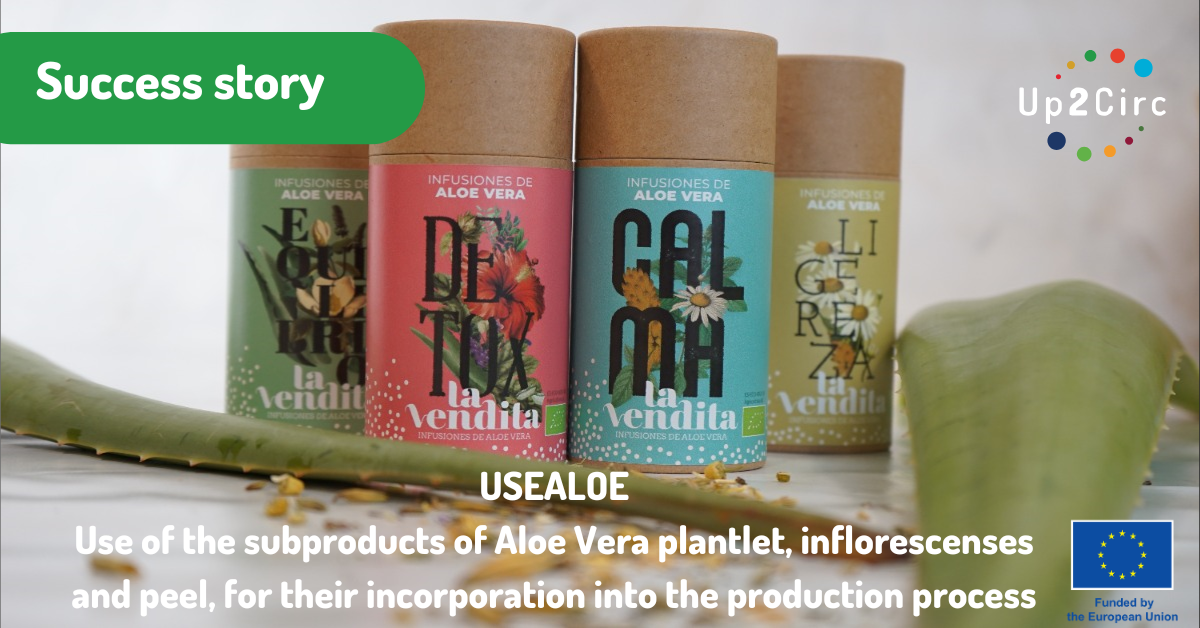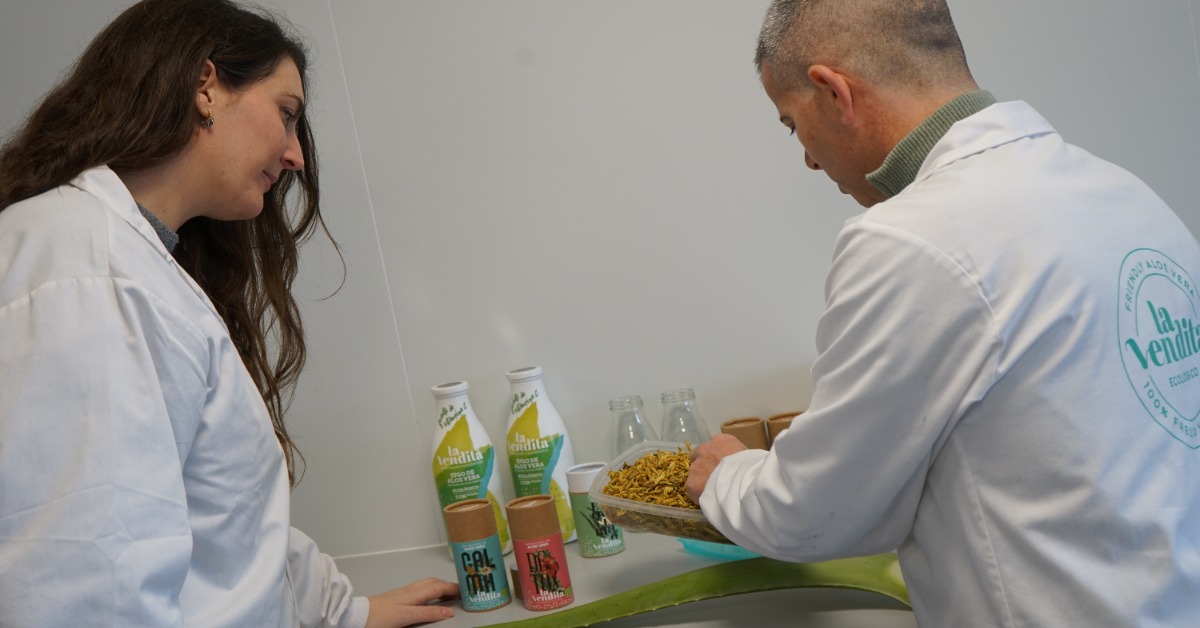USEALOE: A PROJECT BASED ON THE UTILIZATION OF BY-PRODUCTS FROM ALOE VERA TO MAKE THE PROCESS MORE CIRCULAR.

SECTOR
AgroIndustrial
CHALLENGE
La Vendita faced the challenge of managing large quantities of aloe vera by-products, including 36,750 kg of inflorescences, 190,000 kg of seedlings and 160,000 kg of leaf husks annually. Transporting this waste to a composting plant located 30 km away resulted in high labour costs and significant greenhouse gas emissions.
SOLUTION
Through the USEALOE project, the company has successfully transformed discarded aloe vera by-products into valuable resources and new income streams, developing innovative and sustainable products such as infusions, gels and powders with cosmetic applications. This solution has not only solved the waste management issue, but has also enhanced resource efficiency by reducing dependence on virgin raw materials. Furthermore, it has minimized the environmental impact by lowering CO2 emissions from transport and waste composting.

CIRCULAR ECONOMY STRATEGIES/BUSINESS MODEL IMPLEMENTED
The USEALOE project has successfully implemented several circular economy strategies, which can be summarised as:
–Waste reduction and by-product valorisation: using the ‘waste as a resource’ approach, 90% of previously discarded by-products are transformed into valuable resources and incorporated into new product lines.
–Product life cycle extension: by using aloe vera by-products to create new products, the life cycle of the plant is extended, maximising its use and reducing waste.
–Increased resource efficiency: reusing by-products reduces the need for virgin raw material by 50%. This not only reduces costs for the company, but also reduces pressure on natural resources.
–Creating new business opportunities: the development of new products from aloe vera by-products has opened up new sources of income for La Vendita.
IMPACT
The USEALOE project has had a significant impact on various aspects of the La Vendita’s operation, encompassing environmental, economic and social benefits.
Environmental impact:
-90% decrease in waste, eliminating 386,750 kg of aloe vera by-products annually.
-Reduction of 7,228 kg of CO2 emissions per year by reusing by-products on-site.
Economic impact:
-50% decrease in virgin raw materials, resulting in cost savings for the company.
-New product lines, opening up new business opportunities and diversifying the company’s offer.
-Increased profitability through the combination of cost reduction and the generation of new revenue streams.
Social impact:
-Creation of new jobs in the region, especially in the areas of by-product collection, handling and processing.
-Local development, especially in the rural environment, thanks to the job creation and economic growth of the company.
KEY TAKEAWAY
The project is an example of how the circular economy can be successfully applied in industry, creating a more sustainable and profitable production model, and can drive sustainability, innovation and economic growth.
